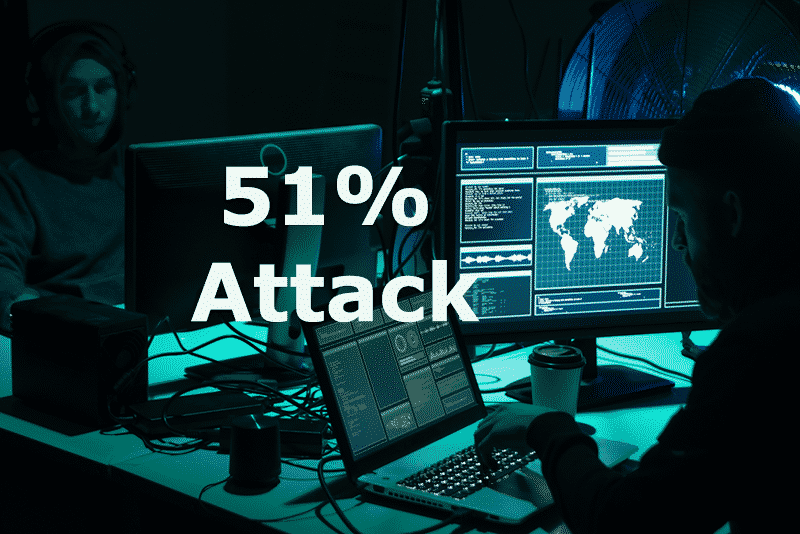A 51% attack is a scenario where one or several miners illegally control over 50% of the blockchain’s computing power. The hackers are able to reverse a transaction that has already been included on the blockchain, or prevent a new one from being confirmed. The resultant double-spending involves using the cryptocurrency coins as if the previous transaction hadn’t occurred.
How Does a 51% Attack Occur?
When a transaction occurs on a typical cryptocurrency blockchain, it is categorized as an unconfirmed entity. Miners are tasked with utilizing their computation power to solve compound mathematical puzzles in order to add a transaction to a blockchain. The solution to the puzzle is then broadcasted to the rest of the miners. The transaction can only be accepted if all the other entities in the existing blockchain are valid.
However, rogue miners fail to present their solutions to the other miners in the group. This results in two versions of the blockchain; the legitimate one and another run by the attacker. By hiding the illegitimate version from other miners, the hacker is able to solve the puzzles quicker than the rest and reserve unconfirmed transactions. This means that they control the transactions that will be confirmed. Subsequently, they double-spend the cryptocurrencies and barr new entities from undergoing the confirmation process.
To understand this process, let’s assume that the hacker has bought an item using 5 Ethereum coins. By having 51% control of the computing power, he can reverse the coins into his digital account and reuse them in another transaction.
ETC 51% attack example
A 51% attack is not just a theoretical concept. It occurs in the real world and has the ability to lower investors’ confidence in a digital currency. One of the cryptocurrencies that have been subject to this safety threat is the Ethereum Classic (ETC). The crypto hard forked from Ethereum. The split came after the 2016 Dao hack. This marked the beginning of security breaches on the cryptocurrency.
At the beginning of 2019, the platform experienced a 51% attack. In an attempt to deal with the issue, Coinbase, one of the key cryptocurrency exchanges, paused all transactions associated with the network. Interestingly, the crypto suffered three more 51% attacks in August 2020. The invasions took place on 1st, 6th, and 29th August.
Bitcoin Gold (BTG) is yet another cryptocurrency that has experienced 51% attacks. In January 2020, hackers got access to the crypto’s blockchain; resulting in the double spending of crypto worth $70,000. The incidence comprised two separate attacks within a span of six hours. In the first case, the attackers removed 14 blocks from the blockchain before replacing them with 13 blocks. Subsequently 1,900 cryptocurrencies, valued at about $19,000 were double spent. The second attack six hours later involved the removal of 15 block and addition of 16. As a result, 5267 cryptos that were worth $53,000 were couple spent.
Other blockchains that have suffered from a 51% attack include Verge (XVG), Vertcoin (VTC) and Feathercoin (FTC).



